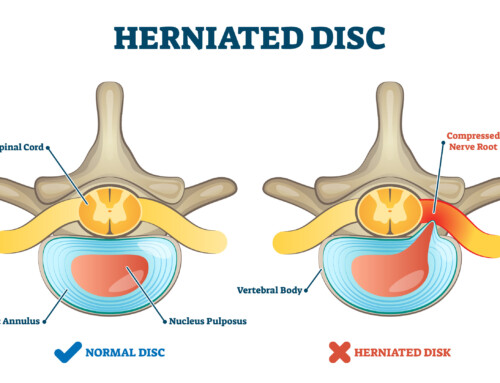By Juliana Geniti, SPT
What is flat back syndrome?
Flat back syndrome (FBS) is a change in spinal posture where the lower back loses its curvature. This results in a forward head and torso positioning, as well as a shift in the body’s center of gravity. This postural imbalance decreases the efficiency of daily movements such as walking and can result in pain.
What are the symptoms of FBS?
A person with FBS may have some of the following symptoms, in addition to the appearance of reduced curves of the spine.
-
-
- Having to bend at the knees and hips to stand upright
- Chronic pain in the muscles of the back
- Shoulders rounding forward by the end of the day
- Fatigue with daily tasks
-
Who is at risk for FBS?
Sitting and standing with repeated poor posture and lack of exercise are major causes in changes of the spinal curvature like flat back syndrome. People diagnosed with degenerative disc disease, compression fractures, or ankylosing spondylitis are all susceptible to developing FBS. Also, flat back syndrome can occur in those after a correction of scoliosis, as the rods used to straighten the abnormal curves of the spine may also straighten the normal curves.
How is FBS diagnosed?
A physical examination and review of your medical history will help your doctor to determine if you have flat back syndrome. Additionally, diagnostic imaging such as X-rays, MRIs, and CT scans can provide help to rule out other possible diagnoses that could be causing your change in posture and pain. Imaging can also give insight to determine the how severe the curve loss is in FBS.
How can PT help with FBS?
A physical therapist can help with pain management, body and posture awareness, and provide exercises that can help stretch and strengthen the muscles around the spine. Tight and/or weak muscles can contribute to muscular imbalances that alter your posture, and as mentioned before, repeated poor posture is a major contributor to flat back syndrome. By addressing these impairments in physical therapy, it is possible to see an improvement in your spinal curvature and symptoms.
References
- Kim WM, Seo YG, Park YJ, Cho HS, Lee CH. Effect of Different Exercise Types on the Cross-Sectional Area and Lumbar Lordosis Angle in Patients with Flat Back Syndrome. Int J Environ Res Public Health. 2021;18(20):10923. Published 2021 Oct 17. doi:10.3390/ijerph182010923
- Flatback Syndrome. Columbia Neurosurgery in New York City. Published April 8, 2021. https://www.neurosurgery.columbia.edu/patient-care/conditions/flatback-syndrome
- Flatback Syndrome. Cedars-Sinai. Accessed April 26, 2023. https://www.cedars-sinai.org/health-library/diseases-and-conditions/f/flatback-syndrome.html






